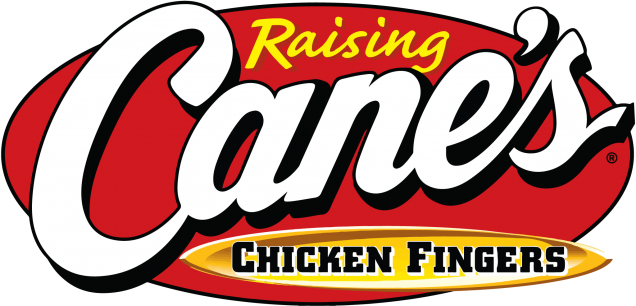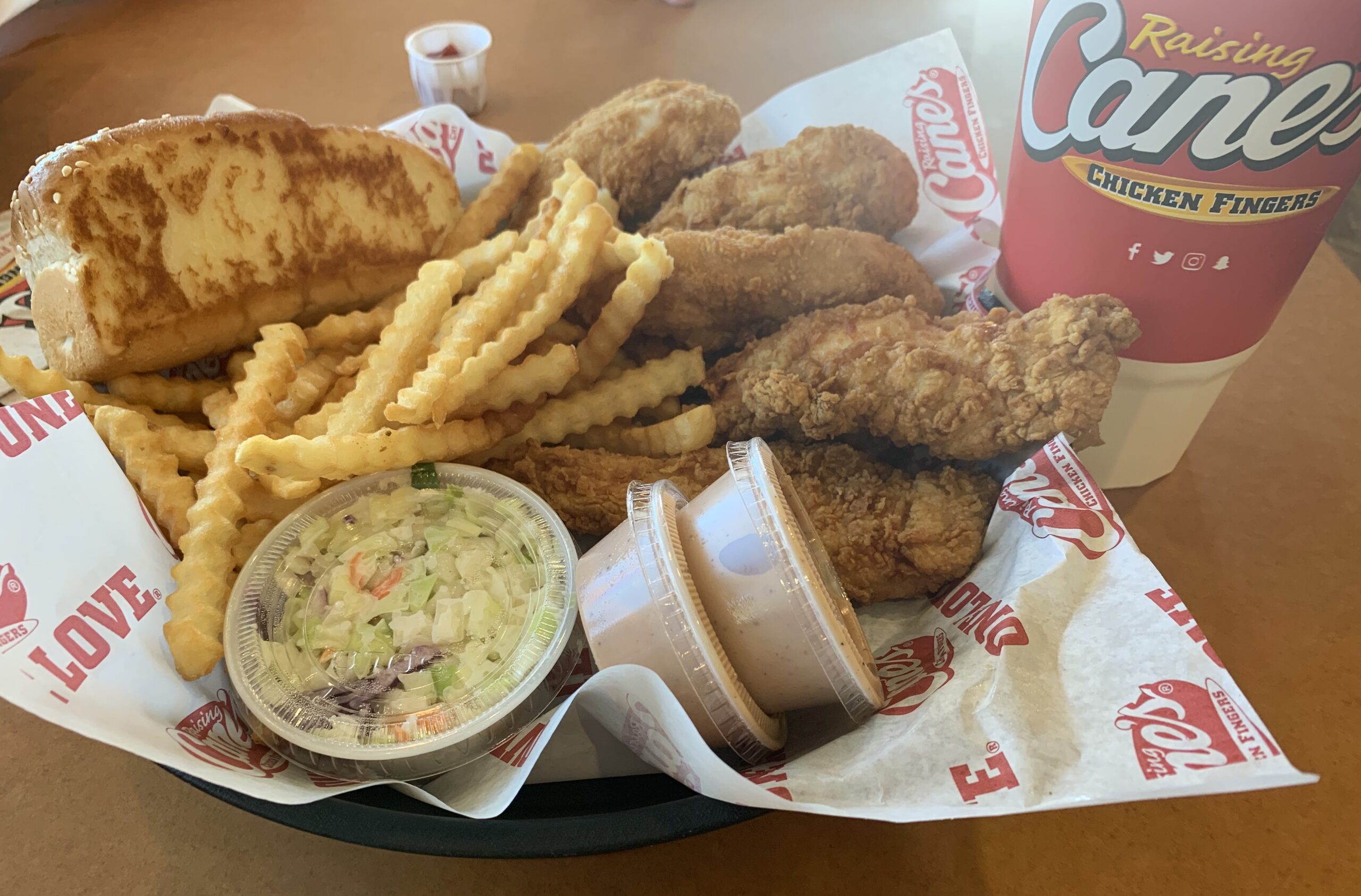A line of girls in designer dresses and heels waits for the catered food at their sorority’s end-of-the-year formal. Awaiting them are huge trays of traditional Cane’s chicken fingers, fries, and toast. One girl declares that today is her “cheat day,” and another says that the only time she eats fast food is at these events. As a member of a sorority myself, these are real comments I have heard, and I have seen Raising Cane’s Chicken Fingers become a staple at most fraternity or sorority events at Tulane University. Students are fortunate to view this food as a special treat, but it is a part of life for residents of lower-income areas of New Orleans due to its affordability and accessibility. On S. Claiborne Ave between Napoleon Ave and Martin Luther King Jr. Blvd, a subsection just under 1 mile long, there are 9 fast food restaurants, some located directly next to each other. Around Tulane’s campus, the number is 0.
Some may view this as a coincidence, but it is actually a strong indicator of poverty. Those living in poverty, with the federal classification being an annual income of $12,140 for one person, cannot afford high-quality food and may be working multiple jobs, which inhibits home cooking. One study of fast-food restaurants across the nation found that low income areas had 1.34 times the number of fast-food restaurants than high-income areas. Also, there is one additional fast-food restaurant per square mile in predominantly Black neighborhoods compared to predominantly white neighborhoods.

Logo for Raising Cane’s Chicken Fingers
Photo by: Raising Cane’s Chicken Fingers
In New Orleans, 2 of the 5 Cane’s restaurants are located in Central City, an area with a poverty concentration greater than 40 percent, according to The Data Center. By comparison, the Audubon and Uptown areas close to the university have a poverty level below the national average of 14.3 percent. Another important metric to examine is the concentration of high and low-wage workers. In Central City, the percentage of low wage workers is above the New Orleans average of 24.1 percent. Conversely, Uptown is above the New Orleans average (33.9%) for high=wage workers in this case.
It can be argued that the federal government is responsible for this disparity by creating the Small Business Administration (SBA), which provided Equal Opportunity Loans (EOL) to minorities. Through the program, 1,560 loans totaling about $25 million were provided to people to open franchises, many of them fast-food restaurants. For example, Subway franchisees received $27.7 million in SBA loans, but grocery stores only received $4.1 million in total. In fact, the first Raising Cane’s was founded in Louisiana in 1996, thanks to an SBA loan. More SBA loans were provided to fast-food restaurants than grocery stores due higher profit margins and lower space capacity. In high-density urban areas, space is hard to come by, which makes fast food franchises the preferred recipients of these federal loans.
The founding of the SBA was a government attempt to instill peace in low-income areas after the 1968 riots under former President Nixon. The idea was that promoting poor, Black entrepreneurs through EOLs would make the communities happy and restore order. Nixon created the Office of Minority Business Enterprise in 1969, which increased the number of minority-owned franchises from 405 to 2,453 in five years. However, due to the majority of EOLs going towards fast-food franchises, it only further limited access to healthy food in poor communities. According to The Food Trust, only 8 percent of Black Americans live in close proximity to a supermarket, compared to 31 percent of white Americans. Take the Lower 9th Ward: there is only one small grocery store, Lower 9th Ward Market, for the community of nearly 6,000 people. Before its opening, the only option for groceries was a Walmart three busses away.
As a consequence of these policies, fast food has overtaken poor neighborhoods, spurring the obesity epidemic we are facing today. EOL loans pushed low-income areas to become fast food capitals, and companies were able to easily expand under the guise of community uplift. Since their franchises could provide stable employment, the cornerstone of capitalism, these companies were seen as heroes to the mainstream. As a result, obesity levels increased since fast food restaurants are more convenient and readily available than its healthy alternatives.

The Caniac Combo totaling 1790 calories.
Photo by: Wikipedia
According to researchers, “accessibility is a key determinant of consumption and can act as a barrier to or a facilitator for healthy eating… easy access to nutritionally inappropriate food sources may contribute to excessive and harmful weight gain.” Fast-food, being high in calories and fat, would earn it the title of “nutritionally inappropriate,” which is especially concerning when considering how accessible it is in low-income areas. A typical tossed salad is about 230 calories, whereas one Cane’s chicken finger is 140 calories. Taking into account the combo deals, the smallest combo with fries and toast comes in at 1,060 calories.
For context, it is recommended for adult women to eat 1,600-2,400 calories per day and for adult men to eat 2,000-3,000 calories per day. One meal at a fast-food restaurant accounts for a large majority of one’s daily caloric intake, so consistently frequenting these restaurants is a major factor leading to obesity. This was seen in Louisiana when its citizens spent over half their food budget at fast-food restaurants in 2015, resulting in the highest rate of adult obesity in the country. More specifically, the obesity rate of Black residents was 42.5 percent, which is 3 percent higher than their white counterparts. Restricted access to healthy foods has been established as the main contributor, with over 17 percent of Louisiana children living in “food-insecure” homes.
The data is undeniable: low-income areas have significantly less access to healthy foods, which leads to a higher prevalence of obesity and its associated health costs. It’s a continuous cycle where more and more fast-food restaurants flood impoverished areas, further exacerbating economic disparities. Low-wage workers from Central City cannot necessarily afford to shop at Whole Foods on Magazine Street, so they end up resorting to Cane’s and other fast-food restaurants. Due to economic barriers, there is no demand, thus no incentive, for healthier, and consequently more expensive, alternatives to enter the communities that need them the most.
 NOLAbeings Multimedia artist Claire Bangser created NOLAbeings as a portrait-based story project that marries...
NOLAbeings Multimedia artist Claire Bangser created NOLAbeings as a portrait-based story project that marries...  Voodoo in New Orleans: Reviving history: New Orleans fortune telling This article takes a deep dive into the history of Voodoo in New Orleans, its hybridization with Catholicism, and its present-day place in the city's culture. The author visits fortune-tellers in the French Quarter, using their guidance as a tool for introspection rather than a deterministic predictor of the future. Through her experiences in New Orleans, the author feels a mystical connection to both the past and the future.
Voodoo in New Orleans: Reviving history: New Orleans fortune telling This article takes a deep dive into the history of Voodoo in New Orleans, its hybridization with Catholicism, and its present-day place in the city's culture. The author visits fortune-tellers in the French Quarter, using their guidance as a tool for introspection rather than a deterministic predictor of the future. Through her experiences in New Orleans, the author feels a mystical connection to both the past and the future. 